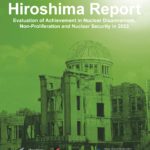IV Summary
1 Construction of Buildings with People’s Power in the Final Stages of Reconstruction
As is often said, the reconstruction process in Japan typically started with a public authority that established the infrastructure and urban foundation. Once the land was prepared, what types of buildings would be constructed and how livelihoods would be rebuilt were typically left up to the private sector, such as land owners, building owners, residents and tenants. After the bombing, the people typically first built temporary shacks and after the urban infrastructure was developed, they constructed full-scale buildings. There were of course different forms of reconstruction, but most buildings constructed in the city had to be done by people’s own efforts. There was a system to provide public loans―but for those in poverty, building their houses on their own was still quite difficult. Many people struggled daily just to get by.
Throughout the reconstruction process, houses were rebuilt and the city was gradually reconstructed. Commercial and business activities needed shops and office buildings, which were designed by architects (and the design sections of construction companies) and built by construction companies. In this way, groups of large buildings gradually started to appear in the city. There were several architects who were particularly active. For example, the architects at Akatsuki Sekkei, a design office in Hiroshima, played a major role in designing buildings after the war. There were also architects who later became independent from Akatsuki Sekkei. These architects also supported the further expansion of the reconstruction efforts. Each individual building was a physical embodiment of Hiroshima’s reconstruction, and people who saw these buildings said that Hiroshima’s reconstruction had made much progress. Architects thus played major roles in the final stages of the reconstruction.
2 Criticism and Problems of the Reconstruction Process
Despite the progress made in the reconstruction efforts, the implementation of the Peace Memorial City Construction Plan faced mounting criticism and disapproval from citizens from time to time, for example, at the time of the local referendum held in July 1949, during the process of enacting the Hiroshima Peace Memorial City Construction Law, and during the mayoral election in April 1955. The dissatisfaction surrounding the land readjustment was also deep-rooted, and in some cases the readjustments were taken to court. We also must not forget the burden and sacrifices made on the part of the citizens during Hiroshima’s reconstruction process.
(Norioki Ishimaru)
Notes and References
Ministry of Construction (co-authored and Ed.). Sensai Fukkoshi: Dai Ikkan (Record of the War-damage Reconstruction, Vol. 1). City Planning Association of Japan, 1959: Vol. 1 of 10.
First Demobilization Ministry (Ed.). Reprint of the original documents archived at the National Diet Library. Nihon Toshi Sensai Chizu (Maps of War Damage in Japanese Cities). Hara Shobo, 1983.
Ishimaru, Norioki. “Reconstruction Hiroshima and Preserving the Reconstructed City” In Hein, Carola; Diefendorf, Jeffery M.; Ishida, Yorifusa (Eds.). REBUILDING URBAN JAPAN AFTER 1945. Palgrave Macmillan, 2003..
Ishida,Yorifusa. Nihon Kindai Toshi Keikaku no Hyaku Nen (100 Years of Modern Urban Planning in Japan), Jichitai Kenkyusha, 1987.
City of Hiroshima (Ed.). Hiroshima Shinshi: Toshi Bunka Hen (History of Postwar Hiroshima: Urban Culture). City of Hiroshima, 1983.
Hiroshima Toshi Seikatsu Kenkyukai (Ed.). Hiroshima Hibaku Yonjyu Nenshi: Toshi no Fukko (Reconstruction of HIROSHIMA, Pictorial History of Forty Years since Atomic Bombing). Division of Culture, Planning and Coordination Bureau, City of Hiroshima,1985.
Moto-machi Chiku Saikaihatsu Sokushin Kyogikai (Ed.). Moto-machi Chiku Saikaihatsujigyo Kinenshi (The Moto-machi District Redevelopment Project Commemorative Publication). Hiroshima Prefecture and the City of Hiroshima, 1979.
Inoue, Makoto. Shodo kara no Saisei, Sensai Fukko wa Ikani Nashieta ka (The Recovery from the Scorched Earth: How the War-damage Reconstruction was Accomplished). Shinchosha, 2012.
Ishimaru, Norioki. “Hiroshima no Sensai Fukko Keikaku-ji ni Okeru Fukko Komon John D Montgomery no Keikaku Shiso to Sono Hatashita Yakuwari ni Kansu Kenkyu” (A Study on the Plans proposed by Reconstruction Adviser John D. Montgomery and their role in the Reconstruction Planning of War-damaged Areas in Hiroshima). Nihon Toshi Keikaku Gakkai (Ed.). Toshi Keikaku Ronbunshu, No. 33-3, October 2009: pp. 829 – 834.
Planning and Coordination Division, City Planning Bureau, City of Hiroshima. Town Planning in Hiroshima, Hiroshima no Toshi Keikaku (in Japanese). City of Hiroshima.
Hiroshima Prefecture. “Dai Yonjyuhachikai Toshikeikaku Hiroshima Chiho Shingikai Gijiroku – Sokkiroku” (Minutes in shorthand notes of the 48th meeting of the Hiroshima Regional City Planning Council). City Planning Division, Hiroshima Prefecture, 1952: and others.
International Peace Promotion Department, Citizens Affairs Bureau, City of Hiroshima (Ed.). Heiwa Kinen Shisetsu Hozon – Seibi Hoshin (Peace Memorial Facilities Preservation and Maintenance Policy). Appendices.
Ishimaru, Norioki. “Hiroshima Heiwa Kinen Toshi Kensetsuho no Seitei Katei to Sono Tokushitsu” (The Process and the Characteristics of Enacting the Hiroshima Peace Memorial City Construction Law). Hiroshimashi Kobunshokan Kiyo, No. 11, 1988: pp. 1 – 56.







